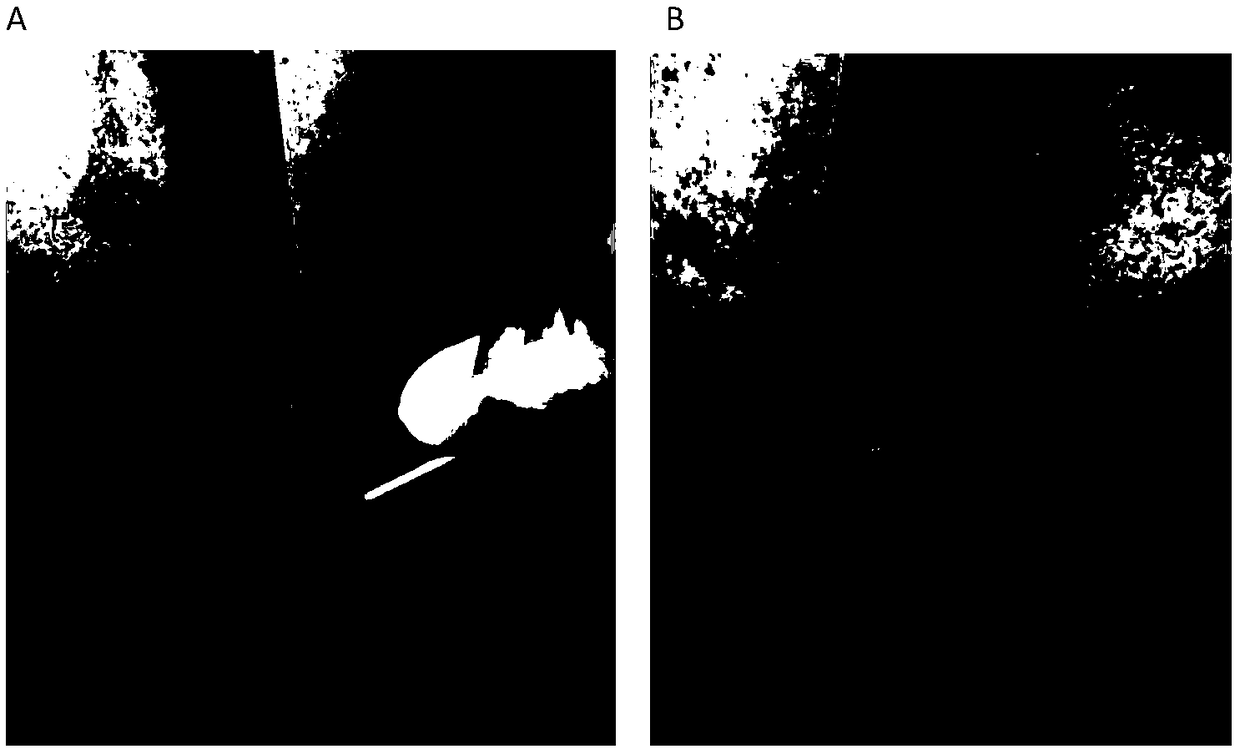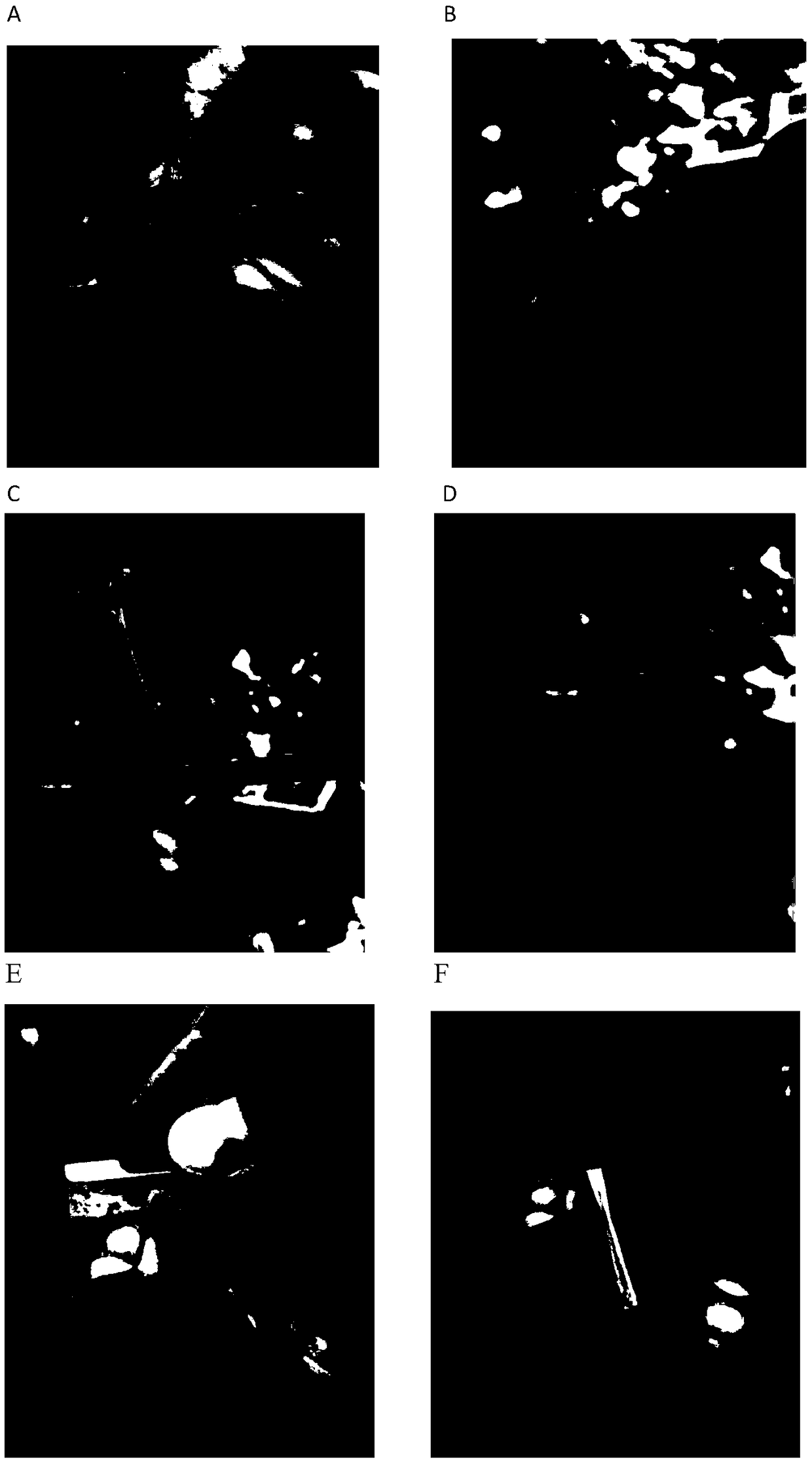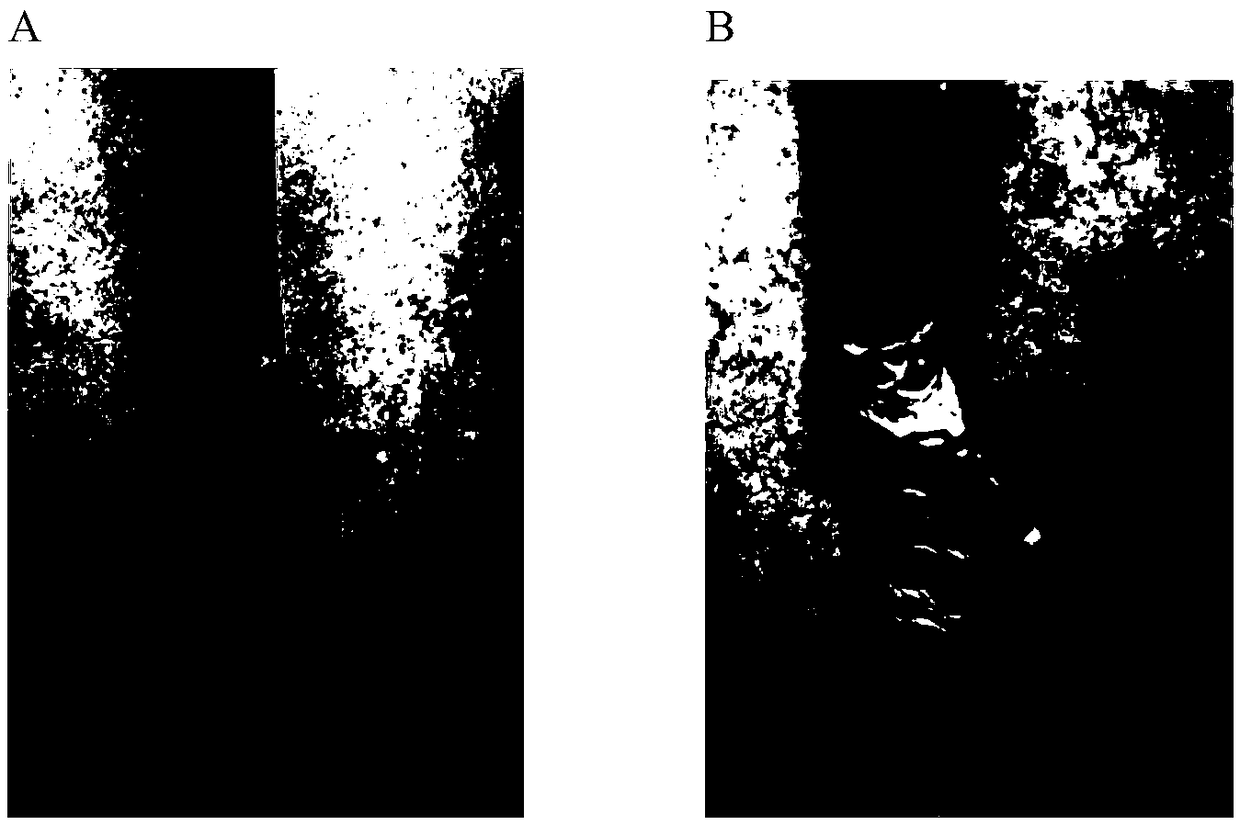Ormosia henryi grafting method
The technology of flower palm and rootstock is applied in the field of high-efficiency grafting of flower palm, can solve the problems of short cultivation period and single flower palm, and achieves the effects of short cultivation period, large output and improved survival rate.
- Summary
- Abstract
- Description
- Claims
- Application Information
AI Technical Summary
Problems solved by technology
Method used
Image
Examples
Embodiment 1
[0058] Three species of Pagoda sylvestris, red beans, and palm trees with a ground diameter of more than 1 cm were selected as rootstocks. The method of the present invention was used for grafting in early April. A randomized block experiment design was adopted, and each rootstock species was repeated 3 Repeatedly grafted 15 plants each time, a total of 45 plants. After grafting, the grafted seedlings are placed in a greenhouse, and the temperature is 20-30°C and the humidity is about 50%. The new shoots on the rootstock are wiped off in time, and the surviving plants are cut off the rootstock 1cm above the scion. Check for survival after 20 days, and check for germination after 25 days.
[0059] Experimental results:
[0060] Table 1 The influence of different rootstocks on the survival rate and germination rate of palm tree grafting
[0061] Rootstock name
[0062] It can be seen from Table 1 that the survival rate of winged locust grafted is the lowest, and even if it survive...
Embodiment 2
[0064] Due to the scarcity of provenances of palm tree, the red beans with a diameter of more than 1cm were selected as the rootstock. The grafting cuttings were treated with three different methods for 0d, 5d, 10d, and 25d, and the method of the present invention was used in early April For grafting, a randomized block experiment design was adopted, with each group of grafting repeated 3 times, and each repeated grafting 15 plants, a total of 45 plants. The three methods are: a. Wrap it in a clean wet towel and put it in a plastic bag to empty the air for shade; b. Keep it at 4°C and keep it cool; c. Keep it at room temperature for moisture. After grafting, the grafted seedlings are placed in a greenhouse, kept at a temperature of 20-30°C and a humidity of about 50%, and checked to survive about 20 days.
[0065] Experimental results:
[0066] Table 2 The effect of different cutting methods on survival rate
[0067]
[0068] It can be seen from Table 2 that a treatment is wrapped ...
Embodiment 3
[0070] Due to the scarcity of provenances of palm tree, the red beans with a diameter of more than 1cm were selected as the rootstock, and cut splicing, split splicing, shield budding, H-shaped peeling budding, and grafting of the present invention were used in early April. Grafting adopts a randomized block experiment design, each grafting method is repeated 3 times, and each repeat grafting 15 plants, a total of 45 plants. After grafting, the grafted seedlings are placed in a greenhouse, and the temperature is 20-30°C and the humidity is about 50%. The new shoots on the rootstock are wiped off in time, and the surviving plants are cut off the rootstock 1cm above the scion. Check for survival after 20 days, and check for germination after 25 days.
[0071] Experimental results:
[0072] Table 3 The effect of different grafting methods on the survival rate and germination rate of palm tree grafting
[0073] Grafting method
[0074] It can be seen from Table 3 that the palm tree ...
PUM
| Property | Measurement | Unit |
|---|---|---|
| Diameter | aaaaa | aaaaa |
| Length | aaaaa | aaaaa |
Abstract
Description
Claims
Application Information
 Login to View More
Login to View More - R&D
- Intellectual Property
- Life Sciences
- Materials
- Tech Scout
- Unparalleled Data Quality
- Higher Quality Content
- 60% Fewer Hallucinations
Browse by: Latest US Patents, China's latest patents, Technical Efficacy Thesaurus, Application Domain, Technology Topic, Popular Technical Reports.
© 2025 PatSnap. All rights reserved.Legal|Privacy policy|Modern Slavery Act Transparency Statement|Sitemap|About US| Contact US: help@patsnap.com



